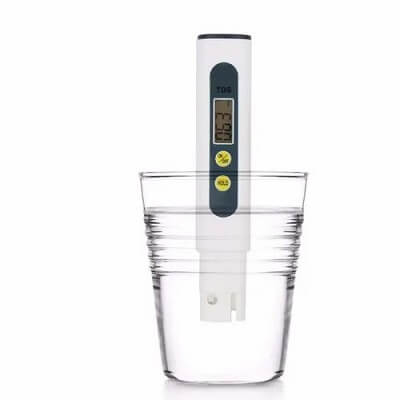What is the full form of Water TDS
Water TDS: Water Total Dissolved Solids
TDS stands for Total Dissolved Solids. The amount of all dissolved materials in a given amount of drinking water is what is meant by this. The mineral water that we consume today is not as pure as we would like. A glass of water can be dangerous if improperly cleansed because it is filled with pollutants, toxins, and chemicals. The inorganic salts that makeup TDS are combined with a little amount of organic stuff. Sodium, calcium, magnesium, potassium, and other positively charged cations make up inorganic salts, whereas negatively charged anions do the same (carbonates, nitrates, bicarbonates, chlorides, and sulfates). The total dissolved solids (TDS) content of the water is measured by its TDS level.

TDS In Drinking Water
- TDS is a constituent of drinking water that comes from a variety of sources, including sewage, urban runoff, industrial wastewater, chemicals used in the water treatment process, chemical fertilizers applied to gardens, and plumbing.
- Water is a universal solvent that readily attracts pollutants and can absorb and dissolve them in a short period of time. Particles are dissolved into the water when it flows through surfaces like pipes, stones, or other obstructions.
- TDS in water can originate from a number of different places, including minerals in water treatment chemicals, runoff from salt on the roads, and chemicals or fertilizers from farms. As well as Carbonate, Hydrogen Carbonate, Chloride, Sulfate, and Nitrate anions, Calcium, Magnesium, Sodium, and Potassium cations are frequently the most noticeable elements.
- Elevated TDS levels in drinking water don't pose a health risk, but they do give the water a salty, bitter, or brackish flavor.
- Water hardness, the development of the scale, and discoloration can all be brought on by calcium and magnesium, two minerals that are frequently present in TDS.
Check TDS Level
The TDS level aids in determining if the drinking water is safe to drink, needs filtering, or is seriously contaminated. The unit of measurement used to determine the TDS level in water is parts per million (PPM). Mineral water doesn't naturally taste or have a scent. The texture and flavor of the water are altered by a change in the TDS level, rendering it unfit for eating.
You should check your drinking water's TDS level for a number of reasons, including:
- Taste: High TDS levels can make water taste salty or bitter.
- Health Concerns: While drinking water with a high TDS level won't have a significant negative effect on your health, drinking water with a high lead or copper content may make you sick.
- Cooking: Food flavors can alter during cooking if TDS levels are above 1000 PPM.
- Maintenance Of Filters: A high quantity of TDS has an impact on water filtering systems. Regular testing of the water purifier systems will guarantee that the filters are functioning effectively.
- Cleaning: On your kitchenware, high TDS in the water causes unsightly stains. In addition to fading the color of your clothing, this type of water causes a buildup in your sinks, tubs, and faucets.
- Plumbing And Appliances: Scale formation in pipes and appliances is brought on by high concentrations of dissolved calcium and magnesium salts, which shortens their useful lives. To quantify total dissolved solids in water, consider the reasons listed above.
Reduce TDS In Water
Similar to how salt, calcium hardness, nitrates, and cyanuric acid are reduced, TDS is also lowered. Here is a thorough explanation.
- Reverse Osmosis: By applying pressure to the water and forcing it through a synthetic membrane, reverse osmosis removes TDS. Only molecules with a diameter of fewer than 0.0001 microns can pass through the membrane's minuscule holes. Due to the size difference between the water molecules and those of the dissolved metals and salts, the water squeezes through the membrane while the metals and salts are left behind.
- Distillation: Water is heated during the procedure to create water vapor. A cool surface is where the water vapor rises to be condensed back into liquid form. The dissolved salts stay in the boiling solution because they cannot evaporate.
- Deionization (DI): This procedure involves running water between a positive and negative electrode. The positive ions are able to disperse from the water and flow in the direction of the negative electrode thanks to the ion-selective membranes. Deionized water with a high degree of purity is the result. Reverse osmosis is used to filter out the non-ionic organic pollutants before the water is used, though.
Conclusion
It's crucial to keep mineral water's TDS level constant. When you can drink water from a reputable brand, you don't have to worry about filtration or pollutants. Your body will receive the necessary dissolved organic and inorganic salts if the ideal TDS level is maintained in each bottle or jar of water. The brand is focused on fostering loyalty and preserving water purity.
|

 For Videos Join Our Youtube Channel: Join Now
For Videos Join Our Youtube Channel: Join Now










